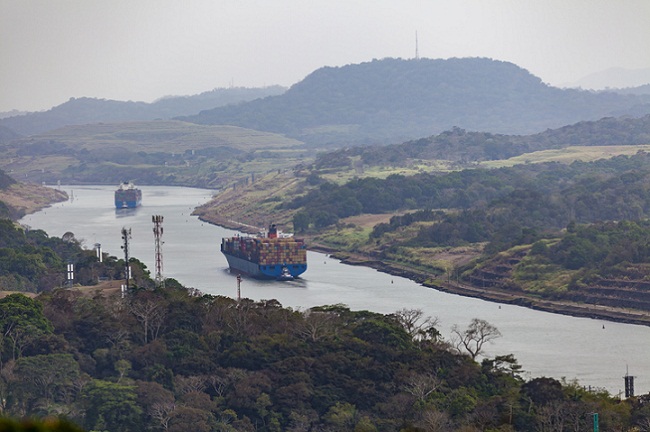Drought Threatens Panama Canal: Impacts On Global Trade And Sustainability

11 September 2023
Overview: Panama Canal Drought Threat
The Panama Canal, a vital waterway connecting the Atlantic and Pacific Oceans, is facing one of its most challenging periods in recent history as a severe drought threatens to further reduce daily transits. This critical trade route, responsible for facilitating global commerce and shipping, has been grappling with the effects of climate change, raising concerns about its long-term sustainability.
The Panama Canal: A Global Trade Lifeline
The Panama Canal has been a linchpin of global trade for over a century, shortening maritime routes and reducing transit times for ships traveling between the Eastern and Western Hemispheres. Its importance cannot be overstated, as it facilitates the movement of goods worth billions of dollars annually.
Each day, an average of 40 to 50 vessels traverse the canal, ranging from massive container ships to oil tankers and bulk carriers. The waterway’s capacity and efficiency are paramount, as even a minor disruption can have far-reaching consequences for global trade flows.
The Drought Dilemma
However, the canal’s role as a global trade hub has come under threat due to a prolonged and severe drought. Climate change has brought about unpredictable weather patterns, causing extended dry seasons in the region. These dry spells have led to a significant decrease in the water levels of the canal’s reservoirs, primarily Gatun Lake, which serves as the primary source of water to keep the canal operational.
The Panama Canal Authority (ACP) relies on Gatun Lake to provide the water necessary to operate the locks and maintain the required depth in the canal. The drought-induced water shortage has forced the ACP to impose restrictions on vessel drafts and limit transits, affecting the canal’s efficiency and profitability.

Impact on Global Trade
The repercussions of the drought on the Panama Canal are not limited to the local economy but have far-reaching consequences for global trade. Here are some of the key impacts:
Delays and Increased Costs
Ships transiting the Panama Canal have been facing delays and increased costs due to the water restrictions. Vessels must now reduce their cargo loads, which translates to higher shipping costs per unit of cargo. These added expenses ultimately trickle down to consumers, potentially raising the prices of goods worldwide.
Shipping Route Diversification
As a response to the uncertainties caused by the drought, some shipping companies have started exploring alternative routes. The Suez Canal in Egypt and the Northern Sea Route in the Arctic have seen increased traffic as shippers seek to bypass the Panama Canal’s uncertainties. This shift in shipping routes could lead to long-term changes in global trade patterns.
Supply Chain Disruptions
The Panama Canal’s reduced capacity has disrupted supply chains, causing delays in the delivery of goods and raw materials. Industries reliant on just-in-time inventory management are particularly vulnerable, as even minor delays can lead to production stoppages and financial losses.
Mitigation Efforts
In an effort to address the crisis, the Panama Canal Authority has implemented several measures:
Water Saving Technologies
The ACP has invested in water-saving technologies such as water-saving basins and modernized locks, which aim to reduce the amount of water required for each transit.
Tugboat Assistance
Tugboats are now used more frequently to assist vessels through the locks, reducing the strain on the canal’s water resources.
Rainwater Capture
Efforts to capture and store rainwater for canal operations have been scaled up, with new infrastructure in place to collect and retain precipitation during the rainy season.
Pricing Adjustments
To incentivize more water-efficient transits, the ACP has adjusted its pricing structure, offering discounts to ships with smaller drafts or those using water-saving technologies.
Long-Term Sustainability Challenges
While these mitigation efforts are crucial for immediate relief, the long-term sustainability of the Panama Canal remains a pressing concern. Climate change projections suggest that extreme weather events, including droughts, are likely to become more frequent and severe in the region.
The ACP is considering more ambitious strategies, such as expanding the canal’s capacity and building additional reservoirs. However, these projects involve substantial financial investments and environmental considerations, raising questions about their feasibility and impact.
International Cooperation
The challenges faced by the Panama Canal highlight the interconnected nature of global trade and the urgent need for international cooperation on climate change mitigation. Climate resilience strategies and water management practices must be shared and implemented across borders to ensure the continued functioning of vital trade routes like the Panama Canal.
Conclusion
The drought-induced water shortage in the Panama Canal is a stark reminder of the vulnerability of critical global infrastructure to the impacts of climate change. As the canal faces the prospect of reduced daily transits, it is imperative that immediate and long-term measures are taken to secure its sustainability. International cooperation, technological innovation, and responsible water management will be key to ensuring that this vital trade lifeline continues to serve global commerce for generations to come.
Click here to join our Telegram chanel
You will get information, news, and support related to Merchant Navy.
